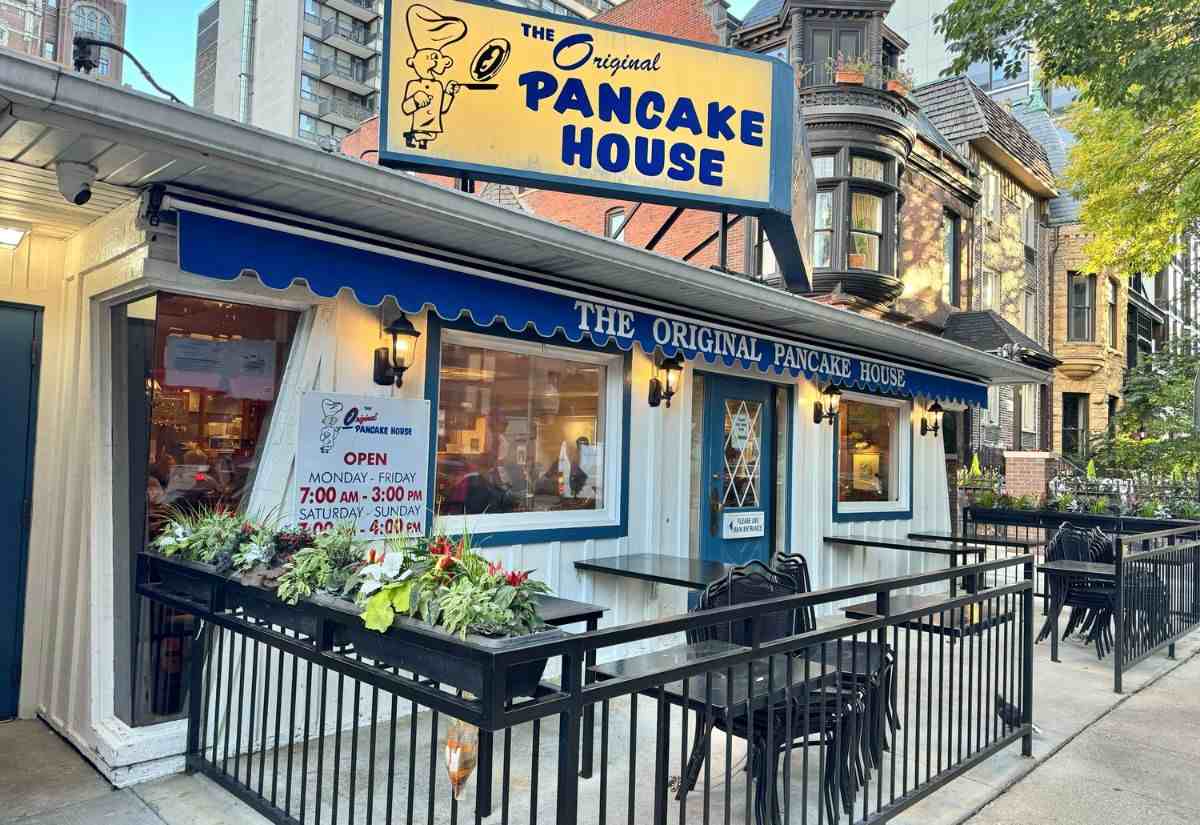America may chase new breakfast trends, but few can match the legacy that pancake houses have built one stack at a time. Through economic change and cultural shifts, they’ve preserved a commitment to simplicity and tradition. That consistency is what keeps them part of American mornings, no matter how tastes and breakfast offerings evolve.

This post may contain affiliate link(s). As an Amazon Associate, I earn from qualifying purchases. See Disclosures.
Over time, pancake houses adapted to new dining habits, transforming from postwar family stops into modern all-day breakfast hubs. They responded to America’s faster pace by modernizing without losing the warmth that made them community favorites.
Early beginnings of pancakes
Pancakes have origins in simple mixtures of flour and water cooked on hot stones or griddles, a practice that dates back thousands of years. Early versions resembled thin flatbreads, often sweetened with honey or served with fruit. As cooking methods advanced, cooks began adding eggs and milk, creating the light texture that later defined the modern version.
When European settlers brought these recipes to America, they adapted them to the grains available, including cornmeal and buckwheat. The introduction of baking powder in the 19th century marked a turning point, creating the soft, fluffy style now associated with American breakfasts. Over time, the dish came to symbolize comfort and family tradition, passed down through generations as a familiar staple of weekend mornings.
Pancake houses go mainstream
During the Great Depression, pancakes became a dependable meal made from inexpensive ingredients, offering comfort when many families had little to spare. The idea of a pancake-focused restaurant began gaining public interest in the 1930s, helped by cultural moments such as the film “Imitation of Life” and by early establishments like The Pancake House in Portland, Ore., which earned praise from food writer James Beard for its quality and creativity.
By the 1960s, pancake houses had become fixtures in America’s growing family dining scene. Bright interiors, colorful menus and friendly mascots made them popular with children, while parents appreciated their affordability and relaxed setting. Many locations added lounges for adults, creating casual spaces that appealed to all ages. Their all-day breakfast service, especially pancakes, helped these restaurants thrive and secure their place in American dining culture.
Expansion of America’s pancake chains
The postwar decades brought a new phase for American pancake houses as franchising opened the door to national growth. Entrepreneurs saw the value of standardized menus and familiar branding, giving rise to chains such as Perkins Pancake House in 1957 and International House of Pancakes in 1958. These restaurants built their success on consistency, from recognizable decor and reliable recipes to predictable service that appealed to travelers and families alike.
As competition grew, menus expanded beyond pancakes to include omelets, sandwiches and combination plates that kept regulars returning at any hour. Many chains adopted 24-hour schedules, reinforcing the idea that breakfast could be enjoyed anytime. With suburban development booming, weekend breakfasts at local pancake houses became a routine for families, and by the late 20th century, American pancake chains had taken their model overseas.
Innovation shapes breakfast favorites
Menus expanded beyond the basic stack to include buttermilk, buckwheat and sourdough varieties, along with crepes, waffles and full breakfast plates as pancake houses gained popularity. The Original Pancake House became known for using premium ingredients such as grade AA eggs, unbleached flour and sourdough starter, as well as specialty dishes like its baked apple pancake. Customization became a major draw, with diners choosing from fruit compotes, whipped cream and flavored syrups instead of the standard butter-and-maple pairing.
Savory innovations soon followed, from batters mixed with bacon to pancakes served with sausage, eggs or rolled fillings that turned breakfast into an all-day option. Health-conscious choices also appeared on menus, with whole-grain, lower-fat and protein-rich pancakes introduced in response to broader dietary shifts.
Pancakes adapt to speed
As American routines became faster-paced in the late 20th century, pancake houses adapted to meet growing demand for convenience. Many chains, including IHOP, Denny’s and Perkins, added takeout options, allowing customers to enjoy breakfast on the go without giving up familiarity or comfort. Partnerships with grocery stores soon followed, bringing pancake mixes and syrups with well-known restaurant branding to supermarket shelves.
The shift toward ready-made meals continued with frozen pancakes and microwaveable breakfasts designed for busy households. These products allowed families to enjoy the pancake house experience at home, keeping the tradition alive even as dining habits evolved.
America’s breakfast stays on trend
Pancake houses remain a familiar part of American dining, where nostalgia meets changing tastes and habits. Many have updated their menus with global flavors, plant-based batters and locally sourced ingredients that align with current food values. Beyond breakfast, they now serve as community spaces where people gather for comfort, conversation and a sense of tradition. The story of the American pancake house continues to evolve, proving that classic dishes can adapt and stay relevant without losing their character.
Jennifer Allen is a retired professional chef and long-time writer. Her work appears in dozens of publications, including MSN, Yahoo, The Washington Post and The Seattle Times. These days, she’s busy in the kitchen developing recipes and traveling the world, and you can find all her best creations at Cook What You Love.
The post From postwar diners to all-day hubs, pancake houses still define the American breakfast appeared first on Food Drink Life.


